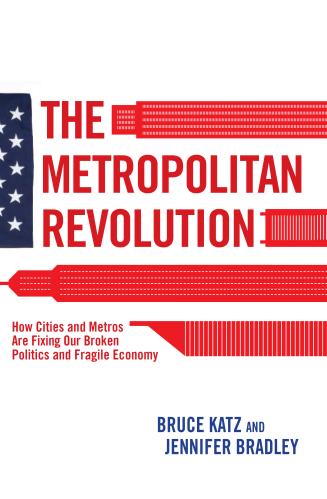North Carolina has enjoyed significant population and economic growth throughout the 1990s. The state is the 6th
fastest growing state in the nation, and 5th in terms of drawing new residents from other parts of the country. A very
important part of what draws these people—almost one million from 1990 to 1998—and the businesses for which they work,
is the state’s quality of life. “Quality of life” is a hard thing to quantify precisely. It encompasses everything from schools to
the environment to jobs to the cost of living to the number of symphony orchestras, colleges and universities, and
recreational opportunities.
North Carolina metropolitan areas frequently show up at the top of lists of the nation’s best places to live or work. This year, Forbes magazine ranked 200 metro areas by wage, salary, and job growth, and increases in high tech clusters. Charlotte was 14th, Raleigh was 21st, and Wilmington was 35th. Money magazine’s, “The Best Places to Live, 2000” ranked Raleigh-Durham 2nd, Greensboro/Winston-Salem 11th, and Charlotte 12th among large metropolitan areas in the South. The Research Triangle Region alone was highly ranked in over 40 magazines, books, reports and newspapers over the last seven years.
Aside from a very healthy economy and growing technology sector, North Carolina also has numerous physical and social attributes that contribute to its quality of life. It has the rich environmental diversity of the mountains and coastal areas. It has the intellectual and cultural attractions offered by its many institutions of higher education.
Yet, the very things that make North Carolina desirable become threatened when too many people act on their desires and move there. Thus, urban growth, and its environmental, social, and economic consequences, has become a pressing political issue across the state. Elected officials are struggling to balance economic and population growth with the preservation of natural resources and enhancements in the quality of life. The state’s metropolitan areas—especially Charlotte and the Research Triangle Park area—are grappling with growth’s fiscal, social, and environmental costs, as are some small towns and rural areas. Meanwhile, many rural areas have the opposite problem: a lack of growth and prosperity.
Growth does not just happen. It is the result of market forces, particular policy decisions, and the relationship between the two. Policymakers need to understand where growth’s pressures are most intense, what drives growth to some places and not others, if North Carolina is to grow differently. They must understand the connections between public policies and development, and the link between little or no growth in some parts of a metropolitan area and explosive growth in other sections of the same region.
Recognizing the need to understand the state’s growth pressures, the Z. Smith Reynolds Foundation recently asked the Brookings Institution Center on Urban and Metropolitan Policy to assess the state of research on growth patterns in North Carolina. Urban Center staff members have made several trips to North Carolina, and have met with leading elected officials, researchers, advocates, and grassroots organizations. We also surveyed 100 people in the state who were working on or knowledgeable about growth issues. Finally, we have analyzed studies on urban and metropolitan growth in North Carolina, its consequences, and policy implications.
In section one, this report summarizes what we found in our analysis of research on growth patterns in North Carolina. It is not intended to be a comprehensive summary of all of the state and metropolitan research that exists, but rather is a compilation of the research we were able to identify. It presents the general social and economic trends the state is facing. We also identify critical questions that the current research—at least as far as we know—does not answer.
In section two, we discuss our main findings, which are:
- North Carolina is growing at a dramatic pace—in population, in jobs, and in land consumption.
- The preponderance of growth is located in the state’s seven major metropolitan areas.
- Rapid, sprawling growth is threatening the quality of life in many parts of North Carolina and could undermine the state’s competitive edge.
- Growth is not uniform across the state, however: rural areas and areas with high concentrations of minorities are being left behind.
- North Carolina needs to grow differently; its growth needs to be more compact and balanced.
Section three describes the efforts North Carolina has made to shape growth, from revitalizing rural main streets to protecting water quality and preserving coastal areas. Section four draws largely on the example of other states to outline an admittedly ambitious smart growth policy agenda that North Carolina should consider, in addition to its existing efforts.
This agenda consists of eight steps:
- Step One: Level the Playing Field Between Older Communities and Newer Developments.
- Step Two: Rethink Transportation Policy
- Step Three: Invest in Land Acquisition and Reclamation.
- Step Four: Consider Broad Growth Management Policies.
- Step Five: Give Local Governments Growth Management Tools and Assistance
- Step Six: Strengthen and Streamline Existing Regional Governance Authorities
- Step Seven: Continue to Support Rural Economic Development
- Step Eight: Disclose Growth and Spending Patterns
Finally, section five describes the research still to be done that will underpin the implementation of the smart growth strategies we suggest. We recommend that North Carolina’s corporate, civic, and political leaders undertake or support the following:
- Create a “Research North Carolina” network, to compile and seed research on growth and development patterns.
- Support research, or additional research, on:
- Intra-metropolitan and rural trends.
- The impact of government policies on sprawl and central city revitalization efforts.
- The implementation of smart growth in other states and localities.
- Variations on costs of sprawl—fiscal, environmental, and social—in various parts of the state.
- Housing affordability’s impact on growth patterns.
Ultimately, the purpose of this project and report is to prompt further research and policy efforts that help North Carolina’s metropolitan and rural areas grow fundamentally stronger.








